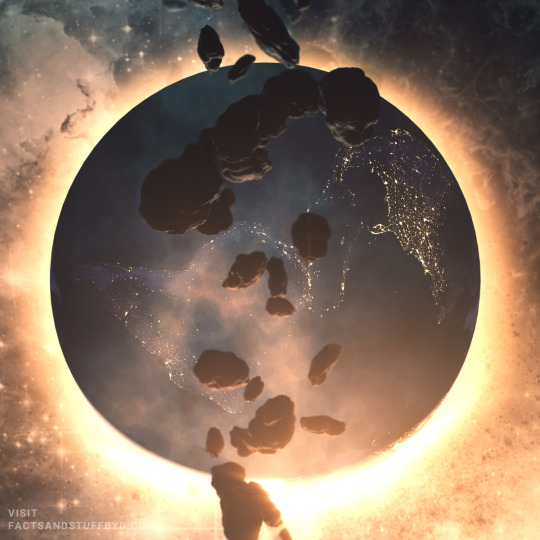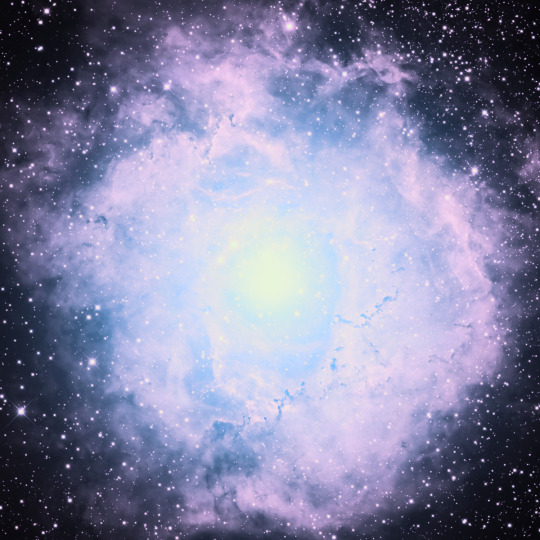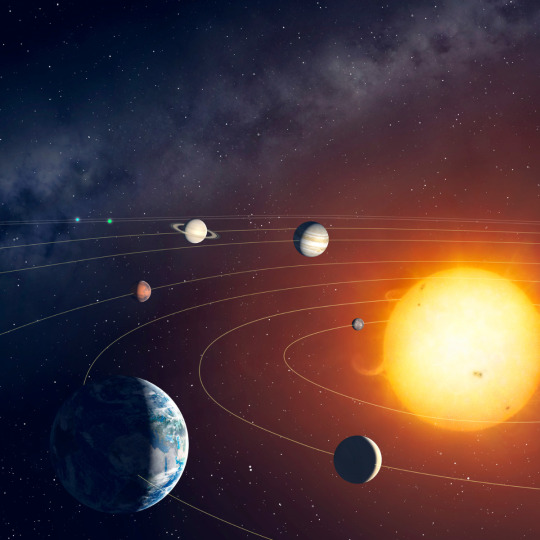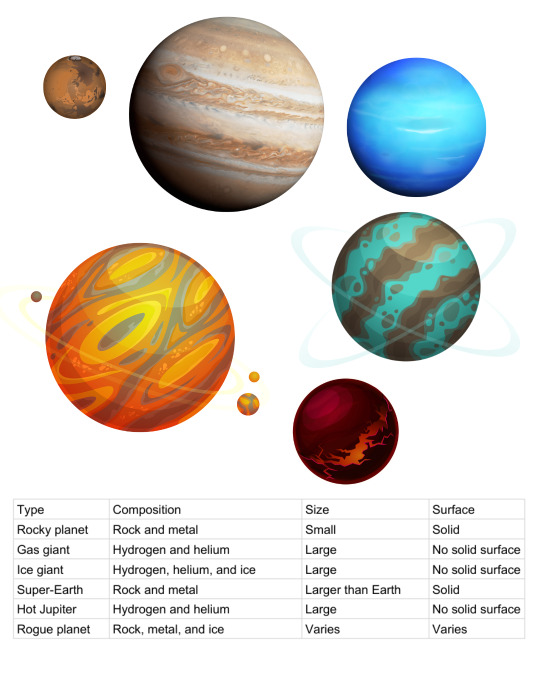Text
Supernovae: Explosions that Shape the Universe

Supernovae are some of the most dramatic and awe-inspiring events in the cosmos. These colossal explosions mark the end of a star's life, and in doing so, they release an extraordinary amount of energy, outshining entire galaxies for a brief period. Supernovae play a vital role in the universe's evolution, as they forge heavy elements, disperse them into space, and contribute to the birth of new stars and planetary systems. This exploration delves into the fascinating world of supernovae, their types, mechanisms, historical significance, and their profound influence on the universe.
I. Introduction to Supernovae
Supernovae, derived from the Latin words "super" (meaning "above" or "over") and "nova" (meaning "new"), are stellar explosions that occur at the end of a star's life cycle. These cataclysmic events release an astonishing amount of energy and are among the most luminous phenomena in the universe. Supernovae have fascinated astronomers and astrophysicists for centuries, serving as cosmic laboratories that reveal the intricate processes governing the cosmos.
II. Types of Supernovae
There are primarily two types of supernovae, each with distinct characteristics and underlying mechanisms:
A. Type I Supernovae
Type I supernovae are characterized by the absence of hydrogen lines in their spectra. They are further subdivided into several subtypes, including Type Ia, Type Ib, and Type Ic.
Type Ia Supernovae: These supernovae are particularly significant because they play a crucial role in measuring cosmic distances. Type Ia supernovae are thought to result from the explosion of a white dwarf in a binary star system. When the white dwarf accumulates enough mass from its companion star, it crosses a critical threshold, initiating a runaway nuclear fusion reaction. The explosion releases a remarkably consistent amount of energy, making Type Ia supernovae excellent "standard candles" for measuring distances across the universe.
Type Ib and Type Ic Supernovae: These types of supernovae are associated with massive stars that have lost their outer layers of hydrogen and, in the case of Type Ic, helium as well. This loss of envelope material exposes the star's core, which eventually undergoes a core-collapse supernova.
B. Type II Supernovae
Type II supernovae, in contrast, exhibit hydrogen lines in their spectra. They are linked to the explosive deaths of massive stars (typically several times the mass of our Sun). The mechanism behind Type II supernovae involves the core of the star undergoing a sudden gravitational collapse followed by a powerful explosion.
III. The Supernova Lifecycle
A star's fate is intimately tied to its mass. Understanding the lifecycle of a star provides insights into how and when a supernova might occur:
A. Stellar Formation
Supernovae begin their journey long before the actual explosion. Stars form from vast clouds of gas and dust through the process of gravitational collapse. As the cloud contracts, it heats up and forms a protostar, which gradually evolves into a stable star.
B. Stellar Evolution
The subsequent evolution of a star depends primarily on its mass. Low to medium-mass stars, like our Sun, follow a relatively peaceful course, eventually transitioning into red giants and then shedding their outer layers to become white dwarfs. High-mass stars, on the other hand, undergo a more dramatic sequence of events.
C. Core Nuclear Fusion
In high-mass stars, nuclear fusion processes continue, forming heavier and heavier elements in the star's core. This process releases energy, counteracting the gravitational force trying to collapse the star. Ultimately, the core accumulates iron, which is unique in that it cannot be used as fuel for fusion reactions beyond a certain point.
D. Core Collapse
When a massive star's core accumulates iron, it reaches a critical threshold. The iron core, unable to produce energy through fusion, can no longer support the star against gravitational collapse. The core implodes in a fraction of a second, leading to the formation of a dense, highly compressed object.
E. Supernova Explosion
The rapid core collapse triggers a rebound effect, resulting in a shock wave that propagates outward through the star's layers. This shock wave disrupts the star's structure, causing it to explode in a brilliant display of light and energy—an event known as a supernova.
IV. The Significance of Supernovae
Supernovae are not just dazzling celestial fireworks; they have profound implications for the universe's structure, composition, and evolution:
A. Stellar Recycling
One of the most significant contributions of supernovae is their role in stellar recycling. These explosions disperse elements forged in the star's core into space, enriching the interstellar medium with heavy elements like iron, oxygen, and carbon. These elements become the building blocks for new stars, planets, and, eventually, life as we know it.
B. Supernova Remnants
Supernova remnants are the glowing, expanding shells of gas and dust that persist long after the initial explosion. These remnants provide valuable insights into the physics of supernovae and the processes that shape the universe. Famous examples include the Crab Nebula and the remnants of SN 1987A.
C. Cosmic Chemistry
The elements produced in supernovae are essential for the formation of rocky planets like Earth. Without supernovae, the universe would lack the chemical diversity necessary for the emergence of life.
D. Galactic Evolution
Supernovae are key drivers of galactic evolution. They inject energy and heavy elements into galaxies, influencing the formation of new stars and the dynamics of galactic structures. The interplay between supernovae and galaxies is central to our understanding of cosmic evolution.
E. Cosmological Probes
Type Ia supernovae, due to their consistent brightness, have played a pivotal role in measuring cosmic distances. They have led to the discovery of the accelerated expansion of the universe, a phenomenon attributed to dark energy, another mysterious cosmic entity.
V. Historical Significance
Throughout history, supernovae have left their mark on human culture and scientific progress:
A. Historical Observations
Supernovae have been observed and documented for centuries. Some of the most famous historical supernovae include the appearances of SN 1006, SN 1054 (which resulted in the Crab Nebula), and SN 1572 (known as Tycho's Supernova).
B. Kepler's Supernova
In 1604, the astronomer Johannes Kepler observed a supernova, later named Kepler's Supernova (SN 1604). This event challenged prevailing notions about the unchanging nature of the heavens, providing empirical evidence for the idea that celestial objects could change and evolve.
C. Scientific Progress
The study of supernovae has significantly advanced our understanding of the laws governing the cosmos. It has contributed to our knowledge of stellar evolution, nuclear physics, and the dynamics of galaxies.
VI. Modern Observations and Research
In the contemporary era, advances in technology and astronomy have enabled scientists to study supernovae in unprecedented detail:
A. Supernova Surveys
Various observatories and space telescopes conduct surveys to detect and monitor supernovae across the universe. These surveys provide critical data for understanding the frequency and distribution of supernovae.
B. Spectroscopy and Light Curves
Researchers use spectroscopy to analyze the light emitted by supernovae. This technique helps determine the supernova's type and glean information about the elements present. Light curve observations track the brightness of a supernova over time, offering insights into its energy output and evolution.
C. Supernova Progenitors
Understanding the types of stars that give rise to supernovae is a critical area of research. Identifying progenitor stars helps refine our models of supernova formation and evolution.
D. Cosmological Applications
Type Ia supernovae serve as valuable tools for measuring cosmological distances. They contributed to the discovery of dark energy, a mysterious force responsible for the accelerated expansion of the universe.
E. Supernova Simulation
Computer simulations play a significant role in modeling supernova explosions. Researchers use supercomputers to simulate the complex physics involved, providing insights into the processes that drive these cataclysmic events.
VII. Supernova Mysteries and Challenges
Despite considerable progress, many mysteries surrounding supernovae persist:
A. Progenitor Identification
Pinpointing the exact progenitor stars of different types of supernovae remains a challenge. The relationship between the initial star and its eventual supernova type is not always straightforward.
B. Supernova Mechanisms
The precise mechanisms that trigger supernovae, especially Type Ia supernovae, continue to be subjects of active research. The debate over the explosion mechanism for Type Ia supernovae, in particular, is ongoing.
C. Dark Energy and Cosmic Acceleration
While Type Ia supernovae contributed to the discovery of dark energy, its true nature remains one of the most profound mysteries in modern cosmology.
D. Supernova Rate and Impact
Understanding the rate at which supernovae occur and their impact on galaxy evolution is a complex problem. Variations in supernova rates across different regions of the universe are not yet fully understood.
E. Neutrino Emission
Supernovae are prolific sources of neutrinos, elusive subatomic particles. Detecting these neutrinos and studying their properties can provide valuable insights into the supernova process.
VIII. Conclusion
Supernovae are celestial marvels that have played a pivotal role in shaping our understanding of the universe. These explosive events mark the grand finale of stars, scattering heavy elements, influencing galactic evolution, and serving as cosmological signposts. While many mysteries remain, the study of supernovae continues to inspire and inform our exploration of the cosmos, revealing the intricate and breathtaking tapestry of the universe.
0 notes
Text
The Dance of Planets: Understanding Orbits

Planetary motion is a mesmerizing cosmic dance that has captivated human curiosity for centuries. The graceful orbits of planets around stars reveal the intricate ballet of celestial bodies as they traverse the vast expanse of space. Understanding these orbits requires delving into the fundamental principles of gravitational dynamics and the laws that govern their elegant movements.
Gravity's Invisible Strings
At the heart of the planetary dance lies gravity, a force that transcends distances and connects every object with mass. Isaac Newton's law of universal gravitation unveiled the nature of this force, explaining that every particle in the universe attracts every other particle with a force proportional to their masses and inversely proportional to the square of the distance between them. This foundational insight provides the gravitational framework that shapes the orbits of planets.
Kepler's Laws: The Choreography of Orbits
Johannes Kepler, a brilliant astronomer of the 17th century, further elucidated the mechanics of planetary motion with his three laws of planetary motion:
Law of Ellipses: Planets orbit the Sun in elliptical paths, with the Sun situated at one of the two foci. This elegant insight shattered the notion of perfectly circular orbits and introduced the concept of eccentricity.
Law of Equal Areas: A line segment joining a planet and the Sun sweeps out equal areas during equal intervals of time. This law highlights the non-uniform speed of planets along their orbits – they move faster when closer to the Sun and slower when farther away.
Law of Harmonies: The square of a planet's orbital period is directly proportional to the cube of the semi-major axis of its orbit. This relationship beautifully links the time it takes for a planet to complete its orbit with the size of its orbit.
Orbital Mechanics: Dance Steps in Space
The dynamics of planetary orbits are governed by the interplay of gravitational attraction and the initial velocity imparted to the planets. The combination of these factors determines the shape, size, and orientation of each orbit. Circular, elliptical, and even parabolic or hyperbolic orbits are possible outcomes, each conveying unique insights into a planet's journey around its star.
Escape Velocity: Breaking the Bond
Understanding orbits also involves exploring the concept of escape velocity. This is the minimum velocity an object needs to break free from the gravitational pull of a massive body. Achieving escape velocity propels objects into trajectories that lead them away from their parent bodies, whether it's a spacecraft leaving Earth or a comet soaring away from the Sun.
Tidal Forces: A Gravitational Tug-of-War
In the cosmic dance, tidal forces come into play when the gravitational pull of one body is stronger on one side of another body than on the opposite side. This phenomenon causes stretching and deformation, influencing the shapes of celestial bodies and even affecting the rotation rates of planets and moons.
Resonances and Perturbations: The Intricate Interplay
As planets pirouette in space, their gravitational interactions can lead to resonances and perturbations. Resonances occur when orbital periods align in simple fractions, creating stable interactions. Perturbations, on the other hand, result from gravitational tugs from neighboring bodies, leading to small changes in orbits over time. These phenomena showcase the interconnectedness of celestial bodies in the grand cosmic ballet.
Conclusion: The Eternal Dance
The study of planetary orbits is a profound exploration of the laws that govern the universe's choreography. From Kepler's elegant laws to the intricate interactions between celestial bodies, the dance of planets reveals the timeless beauty and precision of the cosmos. Understanding orbits not only deepens our appreciation of the universe but also empowers us to navigate the intricate rhythms that shape the celestial stage on which our planet performs its own cosmic ballet.
3 notes
·
View notes
Text
Unveiling the Mysteries of Black Holes

Black holes, enigmatic cosmic phenomena predicted by Einstein's theory of general relativity, have captivated scientists and the public alike for decades. These mysterious entities, formed from the remnants of massive stars, possess gravity so strong that even light cannot escape their grasp. Exploring black holes has reshaped our understanding of space, time, and the fundamental laws of physics.
Birth of a Black Hole: Stellar Collapse Black holes originate from the explosive aftermath of massive star deaths. When a star exhausts its nuclear fuel, gravity overpowers the outward pressure, causing the star's core to collapse. If the core's mass exceeds a critical threshold, known as the Chandrasekhar limit, it collapses into a singularity, an infinitely dense point, surrounded by an event horizon – the boundary beyond which nothing can escape.
The Gravity Abyss: Warping Space and Time Einstein's theory of general relativity describes gravity as the curvature of spacetime caused by massive objects. Black holes embody this concept to the extreme, warping space and time so severely that they create a gravity well from which nothing, not even light, can emerge. This phenomenon challenges our classical understanding of gravity and beckons us to explore its most extreme consequences.
Revealing the Unseen: Detecting Black Holes Detecting black holes poses a unique challenge due to their invisible nature. Scientists rely on indirect methods. X-ray emissions from matter spiraling into black holes can betray their presence, as can gravitational effects on nearby stars. The LIGO and Virgo observatories have pioneered gravitational wave detection, allowing us to sense the ripples in spacetime generated by black hole mergers.
Size Matters: Stellar and Supermassive Black Holes Black holes vary in size. Stellar-mass black holes, formed from individual star collapses, typically range from a few to several tens of solar masses. In contrast, supermassive black holes inhabit galactic centers and can weigh millions or even billions of times our sun's mass. The processes behind these size differences remain active areas of research.
Dance of Destruction: Black Hole Accretion Disks As black holes pull surrounding matter into their grasp, they create accretion disks – swirling discs of gas and dust. Friction and heat generated within these disks cause them to emit powerful X-rays and other forms of radiation. Studying these emissions provides insights into black hole properties and behavior.
Event Horizon Telescope: Peering into the Abyss In April 2019, the Event Horizon Telescope made history by capturing the first-ever image of the event horizon of a supermassive black hole at the center of galaxy M87. This feat involved coordinating multiple radio telescopes globally, simulating a telescope the size of Earth. The image not only confirmed the existence of black holes but also provided visual evidence of their mind-bending nature.
Hawking Radiation: Black Holes Aren't So Black Black holes aren't completely dark. According to physicist Stephen Hawking, black holes can emit radiation due to quantum effects near the event horizon. This phenomenon, known as Hawking radiation, challenges our perception of black holes as purely consuming entities. It implies that they can slowly lose mass and evaporate over time.
Black Hole Information Paradox: Cosmic Conundrum The nature of information within black holes is a conundrum known as the "black hole information paradox." According to quantum mechanics, information cannot be destroyed, yet black holes seem to violate this principle by absorbing everything that falls within their grasp. Resolving this paradox is a frontier in theoretical physics.
Black Holes and the Cosmos: Galactic Evolution and Beyond Black holes play an integral role in galactic evolution. Supermassive black holes influence their host galaxies through processes like quasars, which emit immense energy. Black hole interactions and mergers also contribute to the universe's dynamism. Understanding these roles enhances our grasp of cosmic evolution.
Beyond the Horizon: Ongoing Exploration The exploration of black holes is an ongoing endeavor, intertwining multiple disciplines, from astrophysics to quantum mechanics. As technology advances, we inch closer to unlocking the secrets of these cosmic enigmas. With initiatives like the upcoming LISA mission to detect gravitational waves from space, our understanding of black holes is poised to expand further, offering glimpses into the deepest corners of the cosmos.
In conclusion, black holes stand as some of the most enigmatic and awe-inspiring entities in the universe. Their influence stretches across space and time, defying our conventional understanding of reality. From their mysterious birth to the intricate dance of matter around them, black holes continue to challenge our intellect and inspire us to unravel the mysteries that lie within their gravitational grasp.
88 notes
·
View notes
Text

The Birth and Death of Stars: A Cosmic Dance of Creation
Genesis of Stars: Molecular Clouds and Swirling Disks The narrative commences with the captivating genesis of stars within colossal molecular clouds. These clouds, composed of gas and dust, undergo a gravitational collapse that marks the birth of nascent stars. Swirling disks of material envelop these stars, setting the stage for potential planetary system formation. The ignition of nuclear fusion within their cores sparks their luminous inception, illuminating the universe with their radiant glow.
Main Sequence Brilliance: The Shining Phase Stars gracefully enter their main sequence phase, characterized by their brightest shine. Fueled by nuclear fusion's energy, they emit light and heat that traverse the cosmos, shaping the fabric of space and time. During this phase, stars serve as beacons, guiding the way through the celestial expanse.
Transcending Boundaries: The Evolutionary Odyssey Transitions mark the stars' cosmic dance. The destiny of a star is defined by its mass. Smaller stars evolve into red giants, their outer layers gracefully shedding in a display of stellar grandeur. These layers contribute to the formation of captivating nebulae, leaving a celestial legacy. The remnants contract to form white dwarfs, celestial remnants that continue to influence the universe with their gravitational pull. On a grander scale, more massive stars culminate their journey in awe-inspiring supernovae, scattering life-enabling elements across the cosmic stage.
Intriguing Remnants: Neutron Stars, Pulsars, and Black Holes Post-supernovae, the narrative reveals intriguing cosmic remnants. Neutron stars and pulsars, products of certain supernovae, emit detectable radiation pulses, unveiling the universe's extreme conditions. Meanwhile, the grand finale for massive stars leads to the birth of black holes—space-time regions of immense gravity that challenge our understanding of the cosmos.
Eternal Choreography: Stars' Endless Impact The cosmic dance of stars carries profound implications. Elements disseminated by supernovae lay the groundwork for new star formation, perpetuating the cycle of creation. The universe, an interconnected web, thrives on this cosmic choreography. Stars, the masterful choreographers, influence galaxies, facilitate planet birth, and enrich the cosmos with life-essential components. The dance endures, a testament to the enduring narrative of creation, transformation, and interconnectedness in the universe.
6 notes
·
View notes
Text

Astronomy is the scientific study of celestial objects, space, and the universe as a whole, aiming to understand their origins, behavior, and interactions. Here are some branches of Astronomy
Astrophysics: Examining the physical properties and behavior of celestial objects and phenomena.
Planetary Science: Investigating planets, moons, and other objects within our solar system.
Stellar Astronomy: Analyzing the life cycles, properties, and behavior of stars.
Galactic Astronomy: Studying the formation, dynamics, and evolution of galaxies.
Cosmology: Exploring the structure, origin, evolution, and fate of the universe.
Exoplanet Studies: Searching for and characterizing planets orbiting other stars.
Astrobiology: Investigating the potential for life beyond Earth in various environments.
Astrochemistry: Exploring the chemical compositions of space objects and interstellar matter.
Astrometry: Precise measurement of positions and motions of celestial bodies.
Radio Astronomy: Studying celestial objects using radio waves and radio telescopes.
Infrared Astronomy: Observing objects by detecting their infrared radiation.
Ultraviolet Astronomy: Examining space objects through their ultraviolet emissions.
Gamma-Ray Astronomy: Studying extremely energetic phenomena through gamma-ray emissions.
X-ray Astronomy: Investigating high-energy phenomena using X-ray observations.
Optical Astronomy: Exploring space through visible light observations.
Meteoritics: Analyzing meteorites to understand the early solar system.
Celestial Mechanics: Studying the motion and interactions of celestial bodies.
Space Weather: Monitoring and predicting space-based phenomena that affect Earth.
Solar Physics: Examining the behavior and properties of the Sun.
Gravitational Astronomy: Detecting gravitational waves to study cosmic events.
Astrodynamics: Calculating the trajectories of objects in space.
Dark Matter Research: Investigating the elusive matter that affects the cosmos.
High-Energy Astrophysics: Studying extremely energetic processes in the universe.
Neutron Star Studies: Analyzing the properties and behavior of neutron stars.
Black Hole Research: Investigating the nature and effects of black holes.
Stellar Evolution: Understanding the life stages and changes of stars.
Observational Astronomy: Collecting and interpreting data from observations.
Theoretical Astronomy: Developing models and theories to explain celestial phenomena.
Astrostatistics: Applying statistical methods to analyze astronomical data.
Astroinformatics: Developing and using computer tools for astronomical research.
Cosmic Microwave Background: Studying the afterglow of the Big Bang.
Meteor Astronomy: Observing meteors, meteor showers, and their origins.
Space Archaeology: Applying satellite imagery to discover ancient sites.
Astrocartography: Mapping celestial objects and phenomena.
Space Debris Research: Monitoring and mitigating human-made space debris.
Astrophotography: Capturing images of celestial objects and events.
Variable Star Observations: Monitoring stars that change in brightness.
Astronomical Spectroscopy: Analyzing the interaction of light with matter in space.
Astrogeology: Applying geological principles to study extraterrestrial surfaces.
Astronomical Surveys: Systematic observations of large portions of the sky to discover new phenomena.
2 notes
·
View notes
Text

The Formation of the Solar System from a Giant Molecular Cloud
The formation of the solar system from a giant molecular cloud can be divided into several key stages. Each stage represents a distinct set of processes that contribute to the eventual creation of the Sun and its accompanying planets, moons, asteroids, and comets.
Stage 1: Formation of the Giant Molecular Cloud
The process begins within a massive, cold, and dense region of interstellar space known as a giant molecular cloud (GMC). These clouds are composed primarily of molecular hydrogen (H2) along with other elements and dust particles. GMCs can span vast distances, often tens to hundreds of light-years across. These clouds are influenced by gravitational forces, turbulence, and magnetic fields, which contribute to their overall structure and dynamics.
Stage 2: Protostellar Cloud Formation
Within a GMC, certain regions start to experience local collapses due to various triggers, such as shockwaves from nearby supernovae or the influence of passing stars. These collapsing regions form smaller, denser pockets of gas and dust called protostellar clouds. Gravity becomes the dominant force in these clouds, causing them to contract further.
Stage 3: Protostar Formation
As a protostellar cloud contracts under its own gravity, it forms a protostar at its center. The protostar is surrounded by a rotating disk of gas and dust, which is a crucial component in the formation of planets. The protostar continues to grow as it accretes material from the surrounding disk. This process can take millions of years.
Stage 4: Planetesimal Formation
Within the protostellar disk, solid particles collide and stick together, forming planetesimals. These small bodies are the building blocks of planets and range in size from dust grains to several kilometers across. These planetesimals continue to collide and merge, gradually growing in size.
Stage 5: Protoplanet Formation
Planetesimals continue to collide and coalesce, forming larger bodies known as protoplanets. These protoplanets start to accumulate more and more material from the surrounding disk, leading to their growth. The protoplanet-forming process is more efficient in the outer regions of the protostellar disk, where volatile compounds like water, methane, and ammonia can condense.
Stage 6: Terrestrial and Gas Giant Planet Formation
In the inner regions of the protostellar disk, where temperatures are higher, only rocky and metallic materials can condense. This leads to the formation of terrestrial planets like Earth, Mars, Venus, and Mercury. In the cooler outer regions, gas giants like Jupiter and Saturn form by accreting large amounts of hydrogen and helium from the surrounding gas in the disk.
Stage 7: Ice Giant Planet Formation
Beyond the orbit of the gas giants, where temperatures are even colder, ice-rich planetesimals accumulate to form the cores of ice giant planets like Uranus and Neptune. These planets have substantial hydrogen and helium atmospheres, but their larger solid cores differentiate them from the gas giants.
Stage 8: Formation of Small Bodies (Asteroids and Comets)
Not all planetesimals become part of planets. Many remain as smaller bodies like asteroids and comets. Asteroids, composed of rock and metal, are remnants of the early protoplanetary disk and populate regions like the asteroid belt between Mars and Jupiter. Comets, made of ices, dust, and rocky material, originate in the outer regions of the solar system and have highly elliptical orbits.
Stage 9: Clearing of the Protostellar Disk
As the protostellar disk's material is gradually accreted onto planets and other bodies, the remaining gas and dust are swept away by radiation pressure from the young star and the solar wind. This process clears the way for relatively clear orbits for the planets.
Stage 10: Present-Day Solar System
After millions of years of evolution, the solar system takes its present form. The Sun shines as the central star, while the planets, each with its unique composition and characteristics, orbit around it. Moons, asteroids, and comets also populate the system, each telling a piece of the story of the solar system's formation.
In summary, the formation of the solar system from a giant molecular cloud involves a series of interconnected stages, where gravity, turbulence, and various physical processes shape the evolution of the protostellar cloud, the formation of stars, planets, and smaller bodies. This journey from a molecular cloud to a diverse and dynamic solar system is a testament to the intricate dance of cosmic forces that shape the universe we observe today.
1 note
·
View note
Text

Time dilation is a fascinating and counterintuitive phenomenon predicted by Albert Einstein's theory of special relativity. It reveals that time is not absolute but is relative to the motion of an observer. When objects move at significant fractions of the speed of light or experience strong gravitational fields, time appears to pass differently for them compared to observers in a different frame of reference. This means that time "dilates" or stretches out, causing different rates of time passage for different observers. To understand how time dilation works in space, we must delve into the core principles of special relativity and explore its implications for our understanding of the universe.
In the early 20th century, Einstein revolutionized physics with his theory of special relativity, which introduced the concept of the speed of light being constant in all inertial reference frames. According to this theory, the laws of physics are the same for all non-accelerating observers, regardless of their relative motion. One of the profound consequences of this theory is the time dilation effect.
Time dilation occurs when objects travel at relativistic speeds, i.e., speeds approaching the speed of light (approximately 299,792,458 meters per second in a vacuum). The theory posits that the faster an object moves, the more time appears to slow down for it compared to a stationary observer. To the moving object, time seems to pass at a normal pace, but to an observer at rest, the moving object's time appears to pass more slowly. This relative difference in the passage of time is known as time dilation.
The formula that describes time dilation is derived from the Lorentz transformation, and it states that the time experienced by the moving object (Δt) is equal to the time experienced by the stationary observer (Δt_0) divided by the Lorentz factor (γ), which is dependent on the object's velocity (v) relative to the speed of light (c):
Δt = Δt_0 / γ
where γ = 1 / √(1 - (v^2 / c^2))
As an object's velocity approaches the speed of light (v → c), the Lorentz factor approaches infinity, causing time dilation to become increasingly significant. This effect has been confirmed through various experiments, such as the observation of cosmic ray particles that constantly bombard the Earth. These particles, which are moving at relativistic speeds, have a longer lifetime than predicted by their half-life when at rest, providing empirical evidence of time dilation.
Apart from relative motion, time dilation also occurs in the presence of strong gravitational fields. According to Einstein's general theory of relativity, gravity is not just a force but a curvature of spacetime caused by massive objects. In regions with intense gravity, such as around massive stars or black holes, spacetime is curved, and clocks closer to the gravitational source experience time at a slower rate than clocks further away. This phenomenon, known as gravitational time dilation, has been verified through precise experiments and measurements.
In summary, time dilation is a remarkable consequence of Einstein's theory of special relativity and general relativity. It reveals that time is not an absolute quantity but is affected by an object's motion or the presence of strong gravitational fields. As objects approach the speed of light or encounter intense gravity, time appears to slow down relative to observers in different reference frames. Time dilation has profound implications for our understanding of the universe, impacting everything from satellite navigation systems to the behavior of massive celestial bodies. Its exploration continues to shape our understanding of the fabric of spacetime and the fundamental nature of reality.
12 notes
·
View notes
Text

DNA is a molecule that carries the genetic information for all living things. It is made of smaller units called nucleotides, which have three parts: a sugar, a phosphate, and a nitrogen base. There are four types of nitrogen bases: adenine (A), thymine (T), cytosine (C), and guanine (G). The nucleotides are linked together in a chain, forming a strand of DNA. Two strands of DNA pair up with each other, forming a double helix. The pairing is based on the rule that A always binds with T and C always binds with G. This way, the two strands are complementary to each other and can store the same information.
DNA is found inside the cells of all organisms. Most of it is located in the nucleus, where it is organized into structures called chromosomes. Each chromosome contains a long piece of DNA that has many genes. Genes are segments of DNA that code for proteins, which are the building blocks and regulators of life. Some DNA is also found in the mitochondria, which are the energy factories of the cell.
DNA is very long compared to its width. A single strand of human DNA is about 5 feet or 1.5 meters long, but it is only 2 nanometers wide. To fit inside the cell, DNA has to be compacted and coiled. It wraps around proteins called histones, forming beads called nucleosomes. The nucleosomes are further coiled into fibers called chromatin, which can condense into chromosomes during cell division.
If we could stretch out all the DNA in one human cell, it would be about 3 km or 6.6 feet long. If we could stretch out all the DNA in all the cells in our body, it would be about twice the diameter of the solar system. That means that our body contains an enormous amount of information encoded in our DNA. This information determines our traits, such as our eye color and height, as well as our risk of diseases and our response to drugs. It also makes us unique from other individuals, except for identical twins who share the same DNA.
DNA is not static; it can change over time due to mutations, which are errors or changes in the sequence of nucleotides. Some mutations are harmless or beneficial, while others are harmful or cause diseases. Mutations can also create variation among individuals and populations, which is the basis of evolution and natural selection.
DNA is a fascinating molecule that reveals a lot about ourselves and our ancestors. By studying DNA, we can learn more about our health, our history, and our future.
3 notes
·
View notes
Text
Here are the types of planets according to size, composition and surface

0 notes
Video
youtube
Can black holes die?
0 notes
Video
youtube
What Happened Before Big Bang? : Unraveling the Mysteries of the Universe's Origins..
0 notes
Video
youtube
Exploring the Mysteries of Cosmic Rays | Top Mysteries Of The Universe
Cosmic rays are high-energy particles that originate from various sources in outer space, including the sun, other stars, supernovae, and black holes. They can be made up of protons, electrons, and atomic nuclei, and can have energies ranging from a few million to trillions of electron volts. When cosmic rays enter the Earth's atmosphere, they collide with atoms and molecules, creating secondary particles and a cascade of reactions that can cause ionization, radiation, and other effects. Cosmic rays are of interest to scientists studying astrophysics, particle physics, and the origins of the universe, as they can provide insights into the composition and behavior of matter and energy in extreme environments. Cosmic rays can also have both beneficial and harmful effects on living organisms, depending on their intensity and exposure.
9 notes
·
View notes
Text
Pluto and Charon are often referred to as "twin dwarf planets" because they are similar in several ways, including their size, composition, and orbit.
First, both Pluto and Charon are relatively large objects in the Kuiper Belt, a region of the solar system beyond Neptune that contains many small icy bodies. Pluto is the largest known object in the Kuiper Belt, while Charon is the largest moon relative to its parent planet in the solar system. Both objects have a similar composition, with surfaces covered in frozen volatiles such as nitrogen, methane, and carbon monoxide.
Second, the Pluto-Charon system is unique in that both objects orbit a point in space between them, known as the barycenter. This makes them a "binary planet" system, rather than a planet and its moon. The orbit of Pluto and Charon around the barycenter is also relatively circular, further emphasizing their similarity.
Finally, both Pluto and Charon are considered dwarf planets, a classification introduced by the International Astronomical Union (IAU) in 2006. This classification applies to objects in the solar system that are large enough to be round due to their own gravity, but have not "cleared" their orbits of other debris. Pluto and Charon are both considered dwarf planets because they share their orbit with several other small bodies in the Kuiper Belt.
Overall, while Pluto and Charon are not identical, their many similarities have led to them being referred to as "twin dwarf planets" and are part of a unique and fascinating binary planet system.
4 notes
·
View notes
Text
2nd Brightest object in the sky
5 notes
·
View notes
Text
Black holes are fascinating and mysterious objects in the fabric of space. They are regions of space where gravity is so strong that nothing, not even light, can escape. Black holes are formed when massive stars run out of fuel and collapse under their own gravity, becoming incredibly dense and compact.
The fabric of space around a black hole is distorted and warped due to the immense gravitational pull of the black hole. This means that the paths of light and matter are bent and curved around the black hole, creating strange and fascinating phenomena like gravitational lensing, where light from a distant object is bent around a black hole, creating a distorted image of the object.
The event horizon is the boundary around a black hole beyond which nothing can escape, not even light. It is a point of no return, where the gravitational pull of the black hole is so strong that anything that crosses the event horizon is inevitably pulled into the black hole's singularity at the center.
Black holes continue to be a topic of intense study and research, as they hold many mysteries and have the potential to reveal new insights into the fundamental nature of the universe. Scientists use a variety of tools and techniques, including telescopes and computer simulations, to study black holes and their effects on the fabric of space.
6 notes
·
View notes
Text
Dark matter and dark energy are two of the most mysterious and intriguing phenomena in the universe. Dark matter is a type of matter that does not interact with light or other forms of electromagnetic radiation, making it invisible to telescopes and other instruments. It is thought to make up approximately 85% of the total matter in the universe and plays a crucial role in the formation and evolution of galaxies. Dark energy, on the other hand, is a form of energy that is thought to permeate all of space and to be responsible for the accelerating expansion of the universe. It is believed to make up approximately 68% of the total energy in the universe, but its nature and properties remain largely unknown. Together, dark matter and dark energy represent some of the biggest unsolved mysteries in modern physics and cosmology.
3 notes
·
View notes
Text
Exploring the Mysterious World of Venus
Venus, the second planet from the Sun, is a fascinating and mysterious world that has captivated astronomers and space enthusiasts for centuries. Often referred to as Earth's "sister planet", Venus has many similarities to our planet, including its size and mass. However, despite its proximity, Venus is a harsh and inhospitable world that poses many challenges to explorers.
Atmosphere and Climate
One of the most unique features of Venus is its thick and toxic atmosphere, which is primarily composed of carbon dioxide with traces of nitrogen and other gases. The pressure on Venus' surface is approximately 90 times greater than Earth's, which is equivalent to the pressure at a depth of 1 kilometer in Earth's oceans. This extreme pressure, combined with the planet's proximity to the Sun, leads to a surface temperature that averages around 462 degrees Celsius (864 degrees Fahrenheit), making it the hottest planet in the solar system.
The thick atmosphere also creates a greenhouse effect that traps the Sun's heat and prevents it from escaping back into space. This results in a surface temperature that is hotter than Mercury, which is closer to the Sun than Venus. The thick clouds of sulfuric acid in Venus' atmosphere also reflect a significant amount of sunlight, making it one of the brightest objects in the sky after the Sun and the Moon.
Geology and Surface Features
Venus' surface is mostly covered by volcanic plains and rugged highlands. The planet has over a thousand volcanic structures, including shield volcanoes, fissure vents, and large volcanic domes. The surface is also marked by vast impact craters, mountains, and deep canyons, such as the 4,000-mile-long (6,400 km) Maxwell Montes, which is the highest peak on Venus.
One of the most intriguing features of Venus' surface is a series of deep grooves and ridges known as "tesserae". These features, which are up to several hundred kilometers long and several kilometers wide, are thought to be tectonic in nature and may be evidence of past plate tectonic activity on the planet.
#astronomy#astrophysics#space#solar system#outer space#venus#planets#universe#cosmology#cosmos#astronomers
73 notes
·
View notes